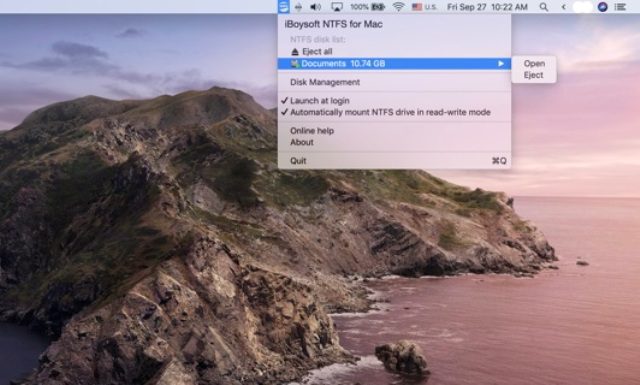NTFS drives are generally reformatted with exFAT, to access it on the macOS and Windows. Paragon NTFS driver supports Mac operating systems such as macOS Mojave, macOS High Sierra, macOS Sierra, Mac OS X EI Captain, Mac OS X Yosemite. Ntfs driver for mac free download - Paragon NTFS for Mac, iBoysoft NTFS for Mac, Paragon NTFS for Mac Special Edition, and many more programs. Format NTFS NTFS drives NTFS for Mac NTFS formatted volumes read-write NTFS driver Tuxera NTFS for Mac. Share This Story. RECOMMENDED FOR YOU. Tuxera and Datalight continue forward as one unified brand – Tuxera. Are existing SMB solutions scalable and can they cope with current demands? Nov 19, 2019 When using Mac OS 10.6, it is possible to write on an NTFS drive, even without installing third-party drivers. However, the write support in the OS settings is not active. Therefore, SL-NTFS software acts as an interface for the Mac OS 10.6 NTFS drivers hence allowing writing permissions for a drive in NTFS format.
Did you know that Tuxera NTFS for Mac also comes with Tuxera Disk Manager? With Tuxera Disk Manager, you can format an external drive or USB stick to work with Windows PCs.


What is formatting?
Simply put, formatting is the process of preparing a drive for use by an operating system. As an example, say you want to get super-organized with your sock drawer. To do that, you would first empty the drawer of all your mixed socks. Then, you’d place a drawer divider into the drawer. The drawer divider creates several small compartments inside the drawer, each meant for storing one pair of socks. With your sock organizing system in place, you’re set up to start filling each compartment with pairs.
Formatting a drive is a bit like organizing a sock drawer. Image credit: osseous(own work) [CC BY 2.0 (http://creativecommons.org/licenses/by/2.0)], via Flickr.
Ntfs Driver For Mac Free
This is similar to how formatting works. First the drive is cleared of any data that may be stored on it. Then it’s set up and organized for storing data in a way that’s possible for the computer’s operating system to understand. And finally, you can start adding files onto it.
Ntfs Driver For Mac Seagate
Be aware that if you do format a drive, everything on it is deleted in the process. So if you have anything important stored on the drive, make sure you back it up before you format.
Tuxera Disk Manager – a must-have for El Capitan
We originally developed Tuxera Disk Manager for the OS X El Capitan release. At that time, Apple’s Disk utility – which is normally used for formatting drives – did not support the NTFS format. If you aren’t able to upgrade from El Capitan, you need to use Tuxera Disk Manager to format NTFS drives.
Apple Disk Utility vs. Tuxera Disk Manager
In Sierra, support for NTFS drivers returned to Apple’s Disk Utility. That means on the latest Macs, you can use Apple’s Disk Utility or Tuxera Disk Manager to format your drive. Whichever way you choose, you’ll still need to install Tuxera NTFS for Mac to format your drive.
Want to learn how it’s done? Watch our video on how to format an NTFS drive using Tuxera Disk Manager:
https://youtu.be/tMxsokC8XUQ?t=2m5s
Ntfs Driver For Mac Wd Passport
And if you don’t have it yet, get Tuxera NTFS for Mac here:
